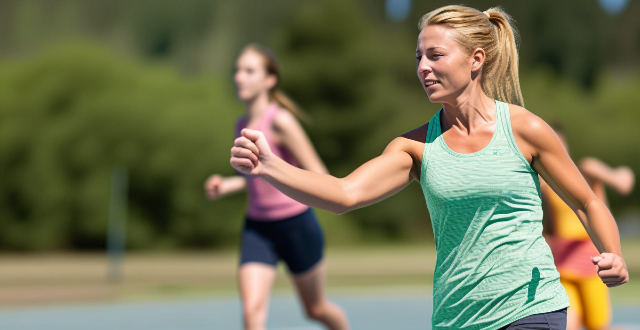Sports education is crucial for preventing injuries and promoting safe exercise habits. It emphasizes proper warm-up and cool-down exercises, correct technique and form, safety equipment and gear, stretching and flexibility, hydration and nutrition, and rest and recovery. By providing athletes with the necessary knowledge, skills, and attitudes, sports education helps them avoid common mistakes that lead to injuries and develop healthy exercise routines.

How Can Sports Education Help Prevent Injuries and Promote Safe Exercise Habits?
Sports education plays a crucial role in preventing injuries and promoting safe exercise habits. By providing athletes with the necessary knowledge, skills, and attitudes, sports education can help them avoid common mistakes that lead to injuries and develop healthy exercise routines. Here are some ways in which sports education can achieve these goals:
1. Proper Warm-Up and Cool-Down
Sports education emphasizes the importance of proper warm-up and cool-down exercises before and after physical activity. These exercises help prepare the body for the demands of the sport, reduce the risk of injury, and promote recovery after exercise.
Warm-Up
- Increases heart rate and blood flow to the muscles
- Prepares the body for the specific movements required by the sport
- Reduces the risk of muscle strains and sprains
Cool-Down
- Slows down heart rate and breathing
- Helps remove lactic acid from the muscles
- Reduces the risk of post-exercise soreness and stiffness
2. Technique and Form
Sports education teaches athletes the correct technique and form for each sport or exercise. Proper technique not only improves performance but also reduces the risk of injury.
- Ensures efficient movement and energy transfer
- Minimizes unnecessary stress on joints and muscles
- Prevents overuse injuries caused by repetitive motions
3. Safety Equipment and Gear
Sports education includes instruction on the proper use and maintenance of safety equipment and gear. This helps protect athletes from potential injuries and ensures their equipment is functioning correctly.
- Helmets, pads, and guards for contact sports
- Proper footwear for different sports and surfaces
- Maintenance of equipment, such as checking for wear and tear or damage
4. Stretching and Flexibility
Stretching is an essential component of sports education, as it helps maintain flexibility and range of motion. Proper stretching techniques can prevent muscle strains and improve overall athletic performance.
- Dynamic stretching before exercise to prepare muscles for activity
- Static stretching after exercise to increase flexibility and reduce muscle tension
- Incorporating stretching into daily routines to maintain flexibility long-term
5. Hydration and Nutrition
Sports education covers the importance of proper hydration and nutrition for athletes. Staying hydrated and consuming a balanced diet can help prevent injuries and improve exercise performance.
- Drinking enough water before, during, and after exercise to replace fluids lost through sweat
- Consuming a diet rich in nutrients to support muscle growth and repair
- Avoiding foods high in sugar or fat that can negatively impact athletic performance
6. Rest and Recovery
Sports education teaches athletes the value of rest and recovery periods between training sessions and competitions. Adequate rest allows the body to heal and recover from the physical demands of exercise, reducing the risk of overuse injuries.
- Scheduling regular breaks and off days to allow the body to rest
- Incorporating recovery activities, such as yoga or light cardio, into training routines
- Prioritizing sleep to support overall health and well-being
In conclusion, sports education plays a vital role in preventing injuries and promoting safe exercise habits among athletes. By focusing on proper warm-up and cool-down exercises, technique and form, safety equipment and gear, stretching and flexibility, hydration and nutrition, and rest and recovery, sports education empowers athletes to make informed decisions about their physical activity and prioritize their health and well-being.